Basil, a beloved herb!
We all get so excited seeing those gorgeous, big leaves at the grocery stores and farmers markets, and many of us intimately share a personal harvesting bond with it in our own home herb gardens during the summer months.
Being among the most popular of herbs, basil – Ocimum basilicum – is widely used in different cuisines and dishes, both sweet and savory.
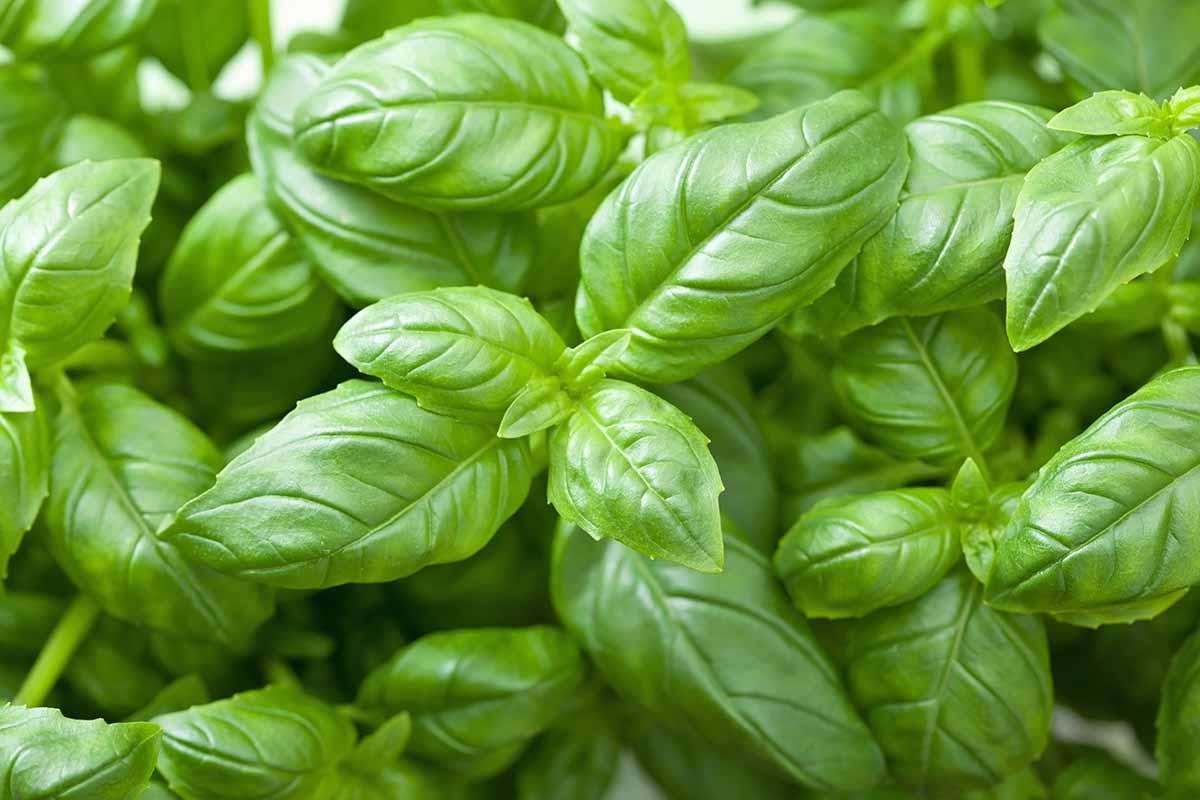
With dozens upon dozens of varieties, this beautiful herb offers a surprisingly expansive assortment of flavors… which means so much creative fun for us in the kitchen!
Flavors range from bold and spicy to mild and sweet, and each type has the ability to grant a given dish its own distinctive signature.
Choosing which type to use is always up to individual tastes and preferences, but there are certain varieties that work advantageously to align perfectly with the recipe at hand.
Some provide the expected bold Italian personality in sauces and dips, while others are better suited for delicately perfuming Thai curries or drinks with subtle anise notes.
In this guide, we’ll chat about our current list of favorite varieties and cultivars, and how each choice can add its unique vibrancy and floral charm to your recipes.
7 Types of Basil for Adding Floral Vibrance to Your Meals
Bring the herbal bounty of basil into your kitchen now!
1. ‘Cinnamon’
‘Cinnamon’ lives up to its name, smelling and tasting like warming, spicy cinnamon.
When used with a light touch, it will give your dishes a lift in directions you never thought of before!
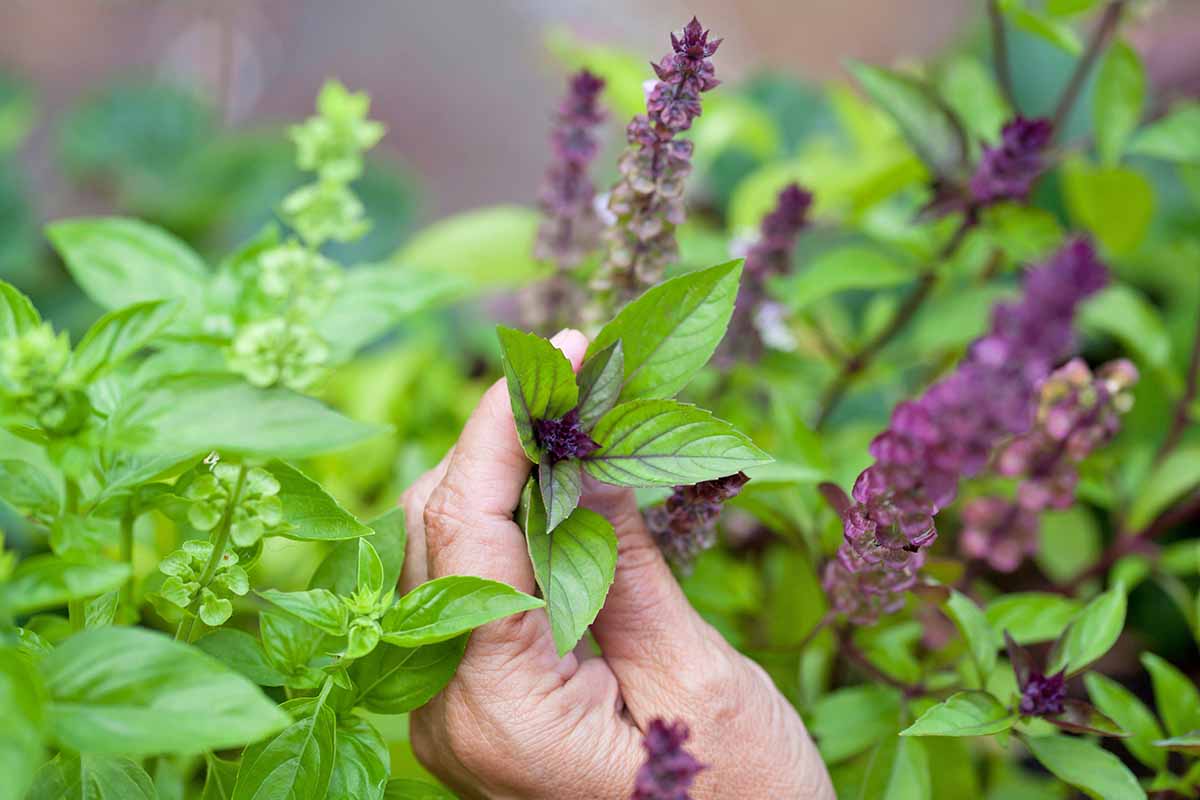
It’s a delightful choice in assorted baked goods, salads, and sweet-and-tangy chutneys.
For a smart pairing, use this particular cultivar in dishes that include granola seasoned with assorted spices. Mix it in our green salad with savory granola, or use it as a garnish for our fruit salad yogurt parfait.
For dessert, what a delicious addition it will be in our slice-and-bake buttery shortbread cookies! Anything but plain, these baked treats are buttery with a slight crumble.
2. ‘Dark Opal’
Gorgeously deep purple, ‘Dark Opal’ is a breathtaking option!
A cultivar of sweet basil, the flavor is approachable and floral without too much bitterness or spiciness.
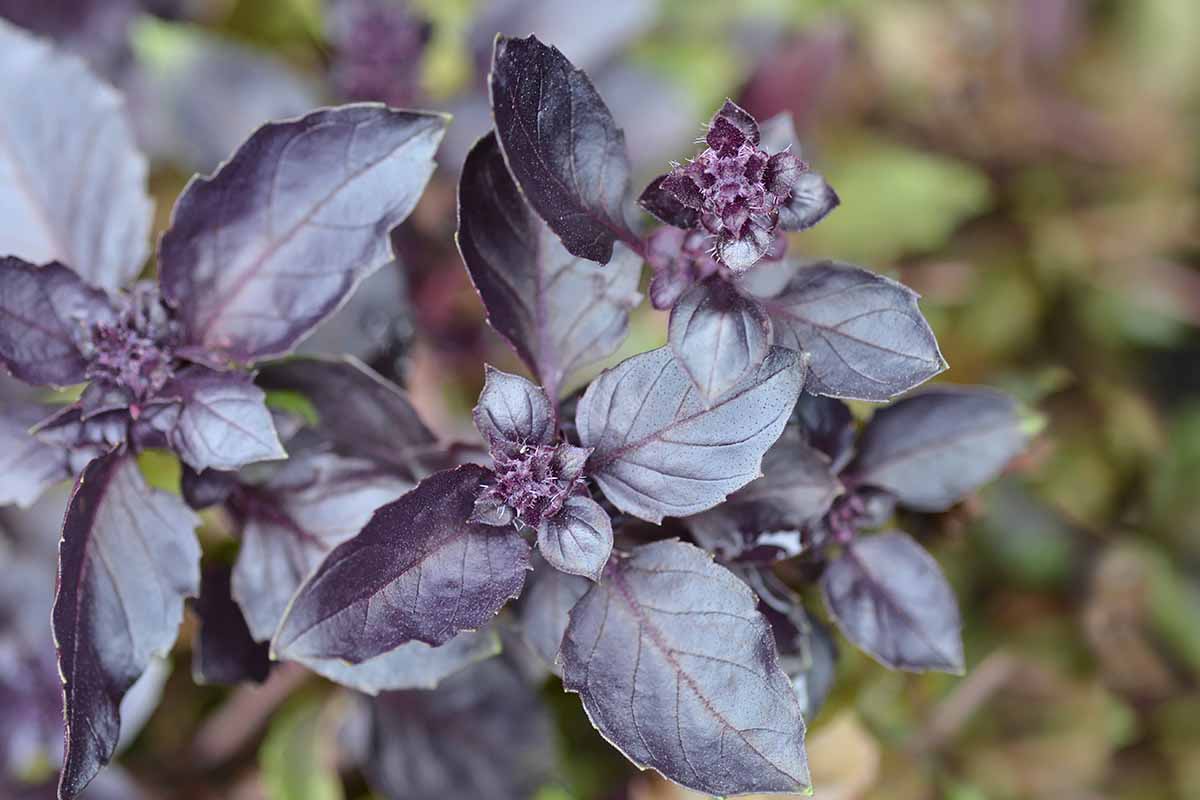
A purple-hued pesto will be a vibrant surprise as part of the dinner course on the kitchen table, and you’ll love the bold look when you pair these leaves with other brightly colored fresh produce like peaches or tomatoes.
For example, the leaves will mingle beautifully with fresh peach wedges on our ricotta flatbreads, or with juicy tomatoes in our oven-roasted tomato sauce.
3. Italian Large Leaf
Italian Large Leaf is a variety with one of the largest leaves among the many varieties.
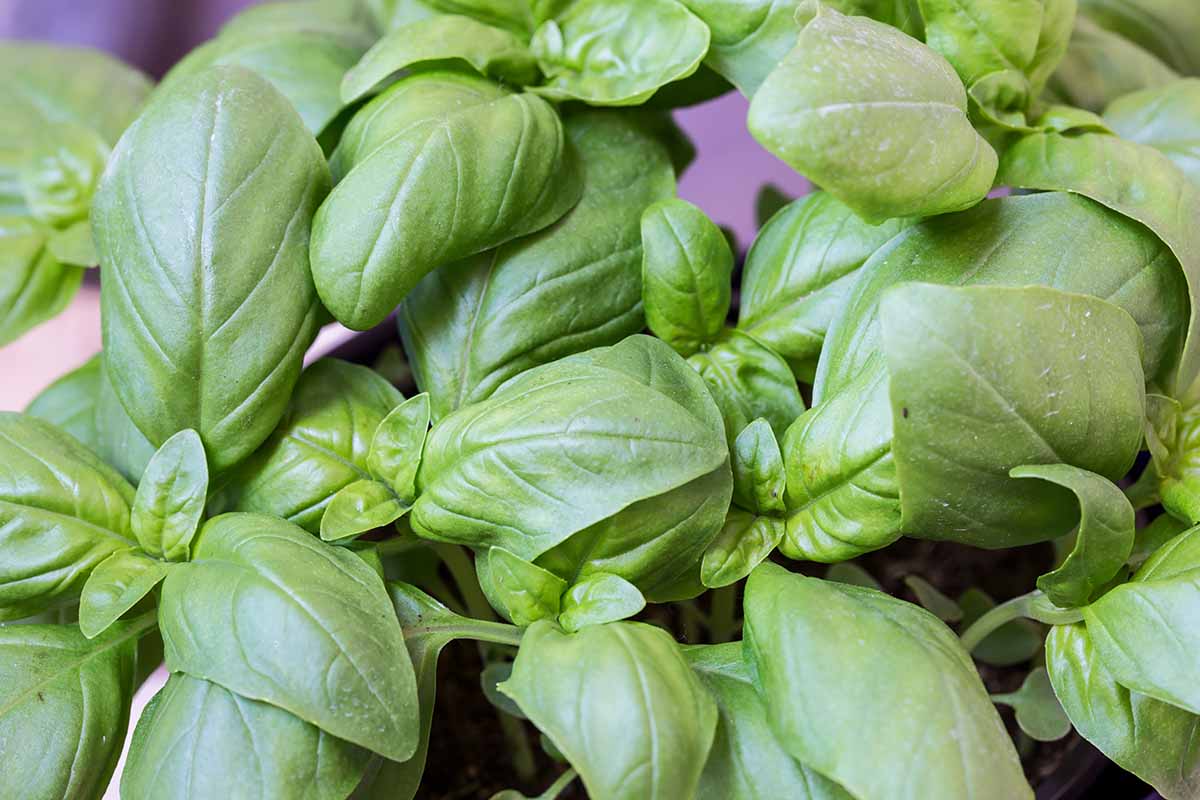
It is big and robust in flavor, yet not overpowering, and is most commonly used in pesto – the larger leaves will yield bigger batches of beautifully flavored sauce!
You can use Foodal’s classic Italian pesto with pine nuts and Parmigiano Reggiano cheese as your go-to recipe.
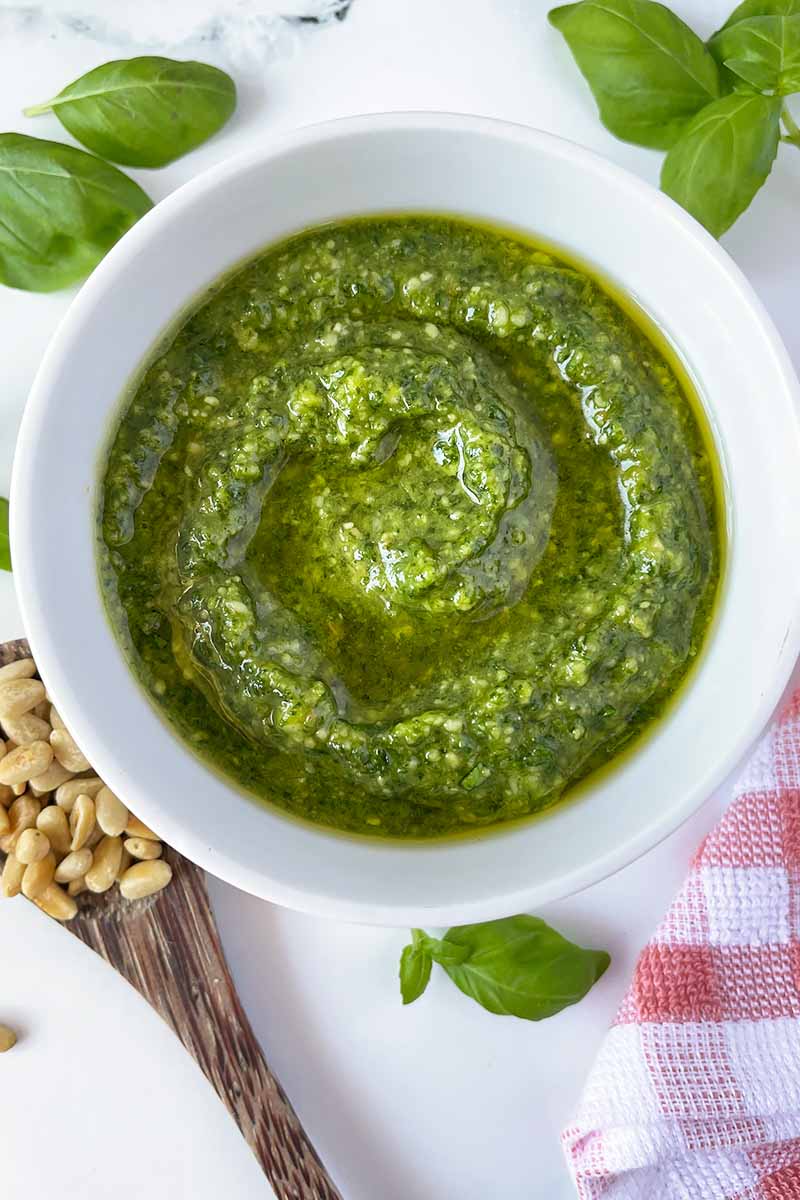
A tried-and-true pairing is pesto and pasta – it’s a winning combo in our chicken pasta with asparagus and sun-dried tomatoes – but there are many other ways to serve this piquant sauce.
Mix it in tender spaghetti squash for a gluten-free dinner idea, or layer it with creamy goat cheese and roasted carrots to make crisp tartines as a party appetizer.
4. Lemon
The Lemon variety tastes just like it sounds: oh-so lemony!
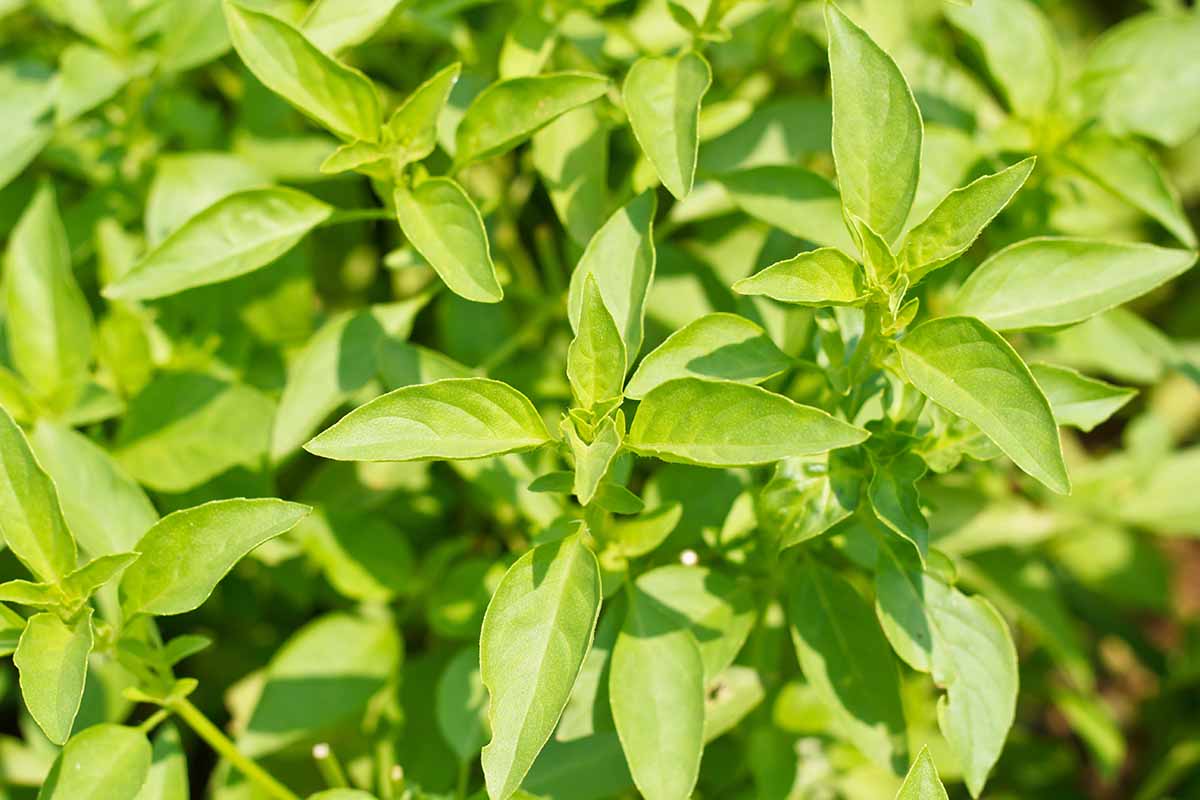
The aroma and flavor is pure, clean, and crisp, and it works wonderfully in sauces. This variety gives a little bit of a lift to your recipes, and a light zing to the taste buds.
You can add a touch of lemon to your dishes without using an actual lemon, or amplify any lemon ingredients already present in the dish… impressive!
Next time you’re seeking a thirst-quenching beverage, use this variety in this strawberry, lemon, and herb infused water.

And for a savory fix, it will be the ideal addition to the citrus-forward ingredients in a vegan lemon orzo pasta salad, as well as in a lemony pesto.
This type complements other cultivars beautifully, so mix it with ‘Red Rubin’ or Italian Large Leaf for a signature blend of fresh herbs that’s uniquely your own.
5. ‘Red Rubin’
‘Red Rubin’ is a cultivar with a flavor that will be pleasing to those in search of a more intriguing taste and color.
These wonderful reddish-purple leaves add color, as well as a clove-like flavor to your dishes.
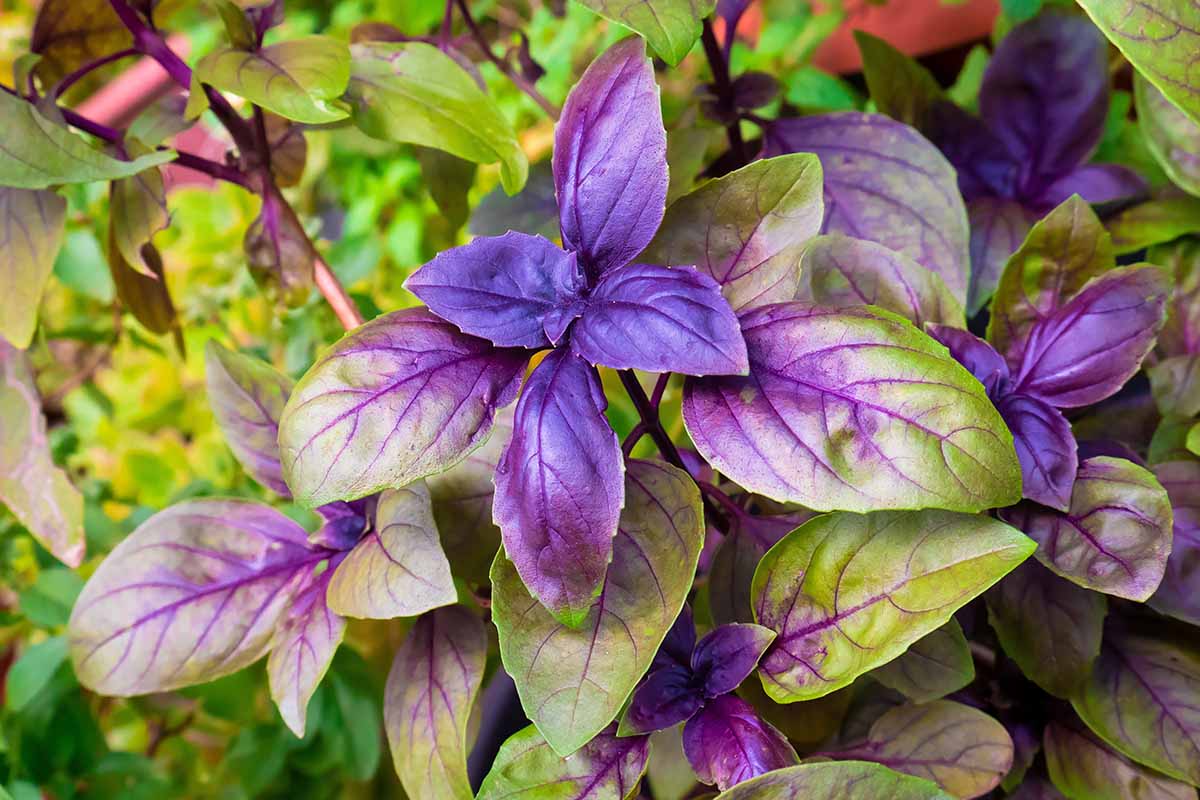
It’s a visually stunning contrast to incorporate in a dish that uses whole leaves, and offers a pop of amusingly opposing color among all the greenery in your garden.
Given its baking spice essence, play with it in baked goodies, both sweet and savory!
We know it will be a natural in our cumin-spiced carrot crostata, as well as our einkorn tomato baked pastry.
6. Sweet
Sweet basil is another rather common variety, and another favorite for pesto.
It’s an appealing choice for everyday use in cooking and garnishing. As the name suggests, these leaves are mild and sweet with a soft and subtle licorice flavor and clove fragrance.
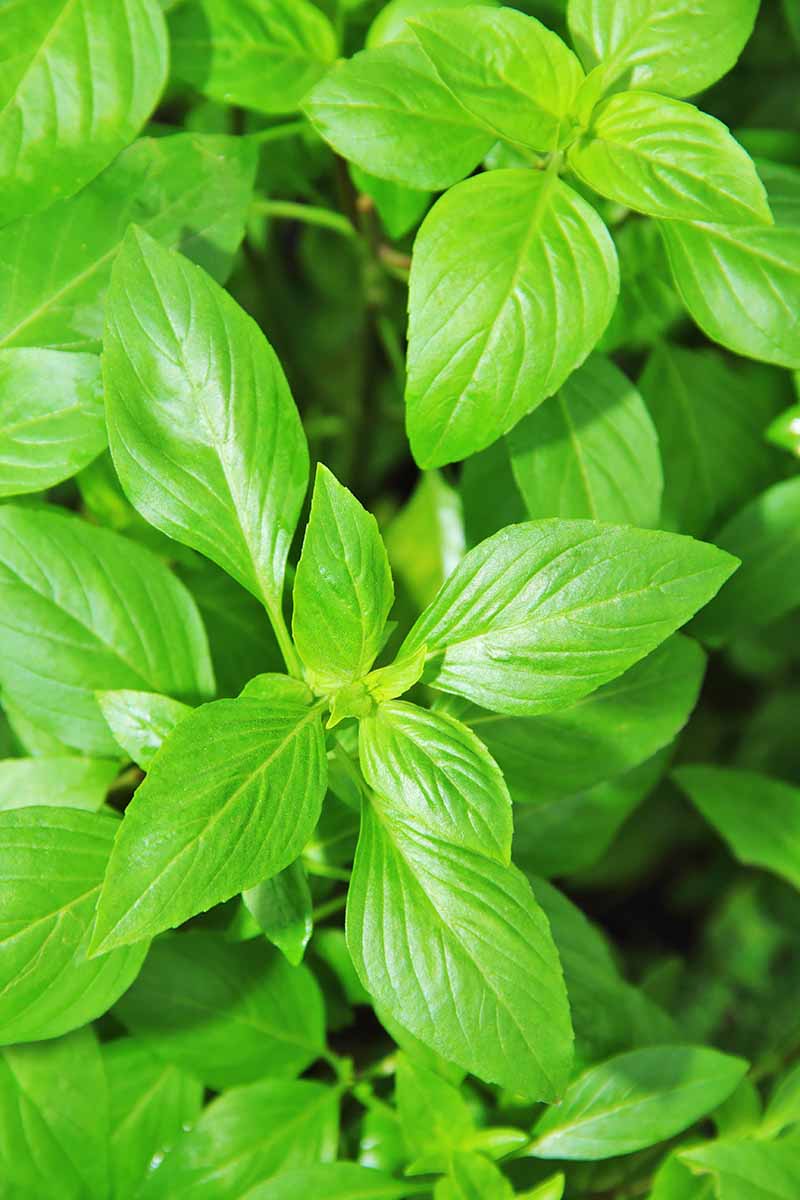
While your pesto will love a handful of these leaves, other dishes will benefit from this option, as well. Toss it in salads with einkorn berries and a honey dressing, layer it in sandwiches and wraps, and use it as a bright garnish for creamy, hearty dishes like mushroom risotto.
Or take inspiration from the name itself, and incorporate it in your favorite sweet treats. Mix it in homemade strawberry jam, which you can then swirl into dairy-free coconut ice cream.
Pursue even more refreshments by adding an herbaceous twist to popsicles – our recipe for citrus honey creamsicles will both surprise and delight!
7. Thai
To add a spicier, stronger kick to your dishes, use the Thai variety!
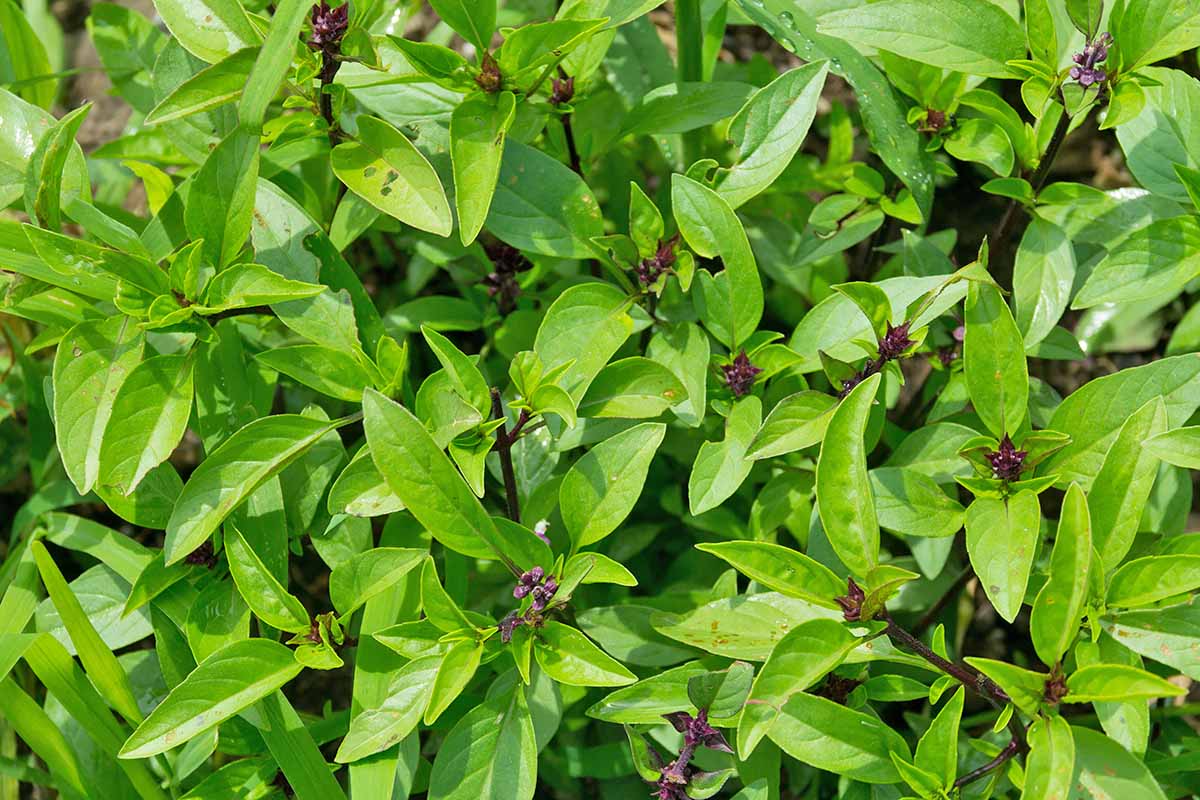
This type is popular for its distinct anise/licorice flavor, and has the power to brighten sultry sauces, soups, stews, and braises with just a few leaves.
When seasoning your recipes with these leaves, begin with a smaller amount, taste-test for strength level, and gradually increase as needed.
This is a thoughtful consideration for first-time consumers, especially those who are not as enthused by anise-flavored ingredients.
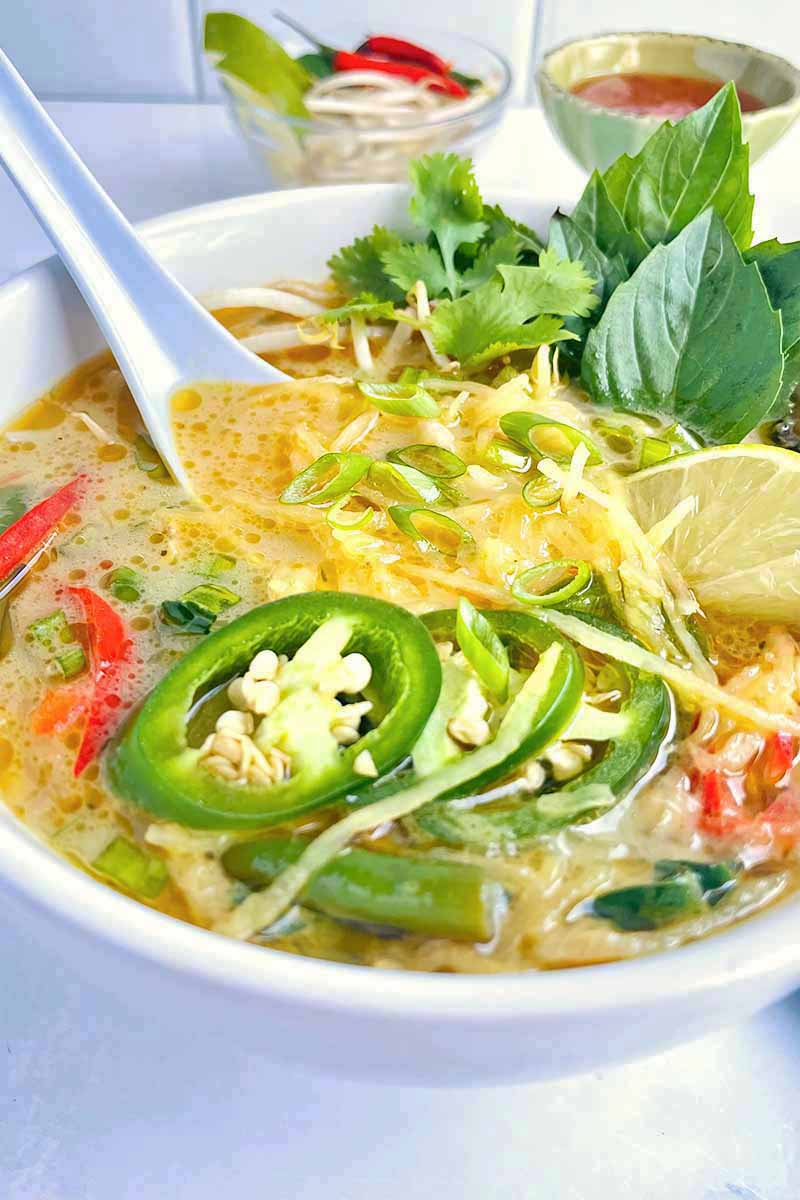
But we don’t think they’ll take much convincing – all they need are a couple sips of our sweet and spicy vegan spaghetti squash laksa soup or our a few nibbles of shrimp pad Thai garnished with a handful of the leaves, and they’ll be hooked on a new herb!
Explore Your Options
If you are a beginning cook or an experienced chef, a basic understanding of the herbs and spices you cook with is essential.
And, understanding that there are varieties and cultivars available of any given herb or spice opens up the opportunity to play and experiment with subtle flavor differences.
And that certainly can be said for basil!
Perfect in pesto, there are countless other ways to use this floral herb – use it in soups, pizzas, drinks, desserts, baked goods, and far more. Try any of our suggestions we recommended, and see how a new variety of herb can update your favorite recipes.
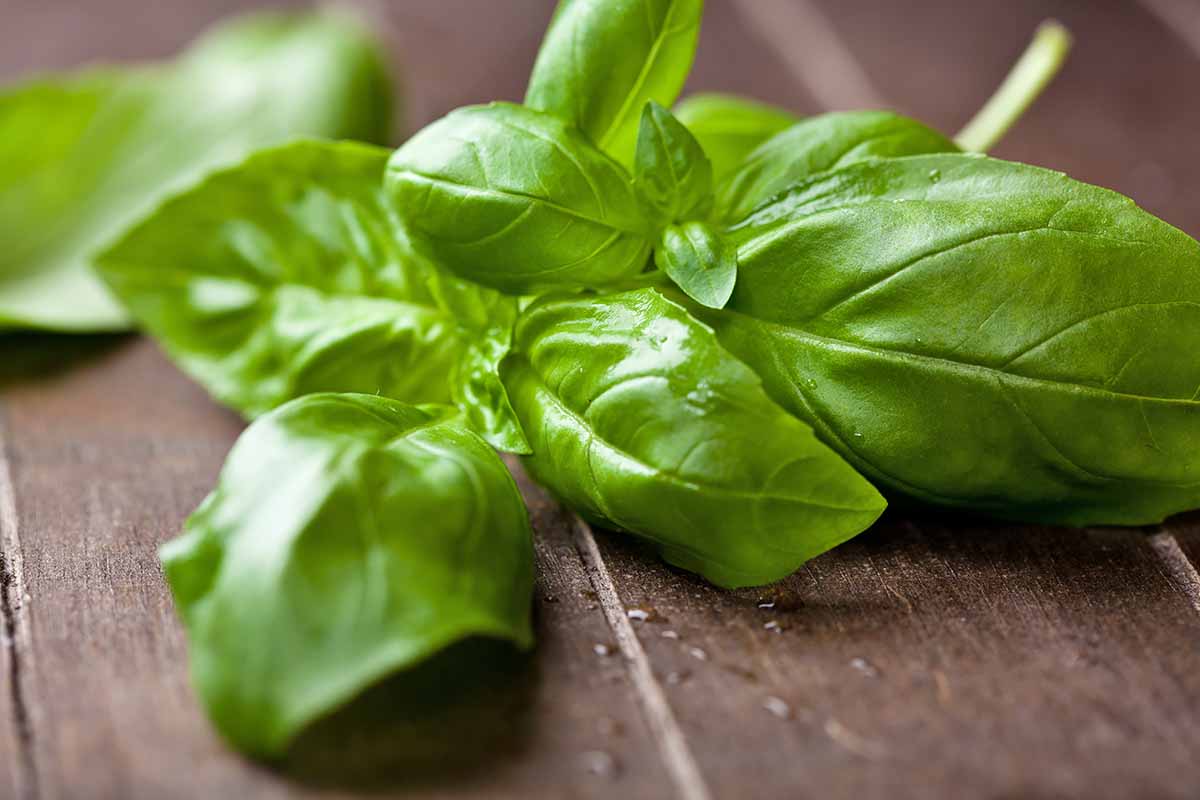
Want to work that green thumb? Head over to our sister site Gardener’s Path to learn more about the best varieties of basil, and how to grow them.
What will you season with this featured herb? And what type will you use among our list? Let us know in the comments!
If you hope to dive deeply into learning about other herbs and how to use them in your kitchen, take a look at more guides among our collection of herbs and spices articles:
- Jazz Up Your Menu with Ginger
- 9 Types of Aromatic Mint for Garnishes and More
- Spicy Wasabi: A Rare Rhizome with Huge Flavor
Photos by Fanny Slater and Nikki Cervone, © Ask the Experts, LLC. ALL RIGHTS RESERVED. See our TOS for more details. Uncredited photos via Shutterstock. Originally published February 6, 2015. Last updated February 28, 2024.
About Nikki Cervone
Nikki Cervone is an ACS Certified Cheese Professional and cheesemonger living in Pittsburgh. Nikki holds an AAS in baking/pastry from Westmoreland County Community College, a BA in Communications from Duquesne University, and an MLA in Gastronomy from Boston University. When she's not nibbling on her favorite cheeses or testing a batch of cupcakes, Nikki enjoys a healthy dose of yoga, wine, hiking, singing in the shower, and chocolate. Lots of chocolate.

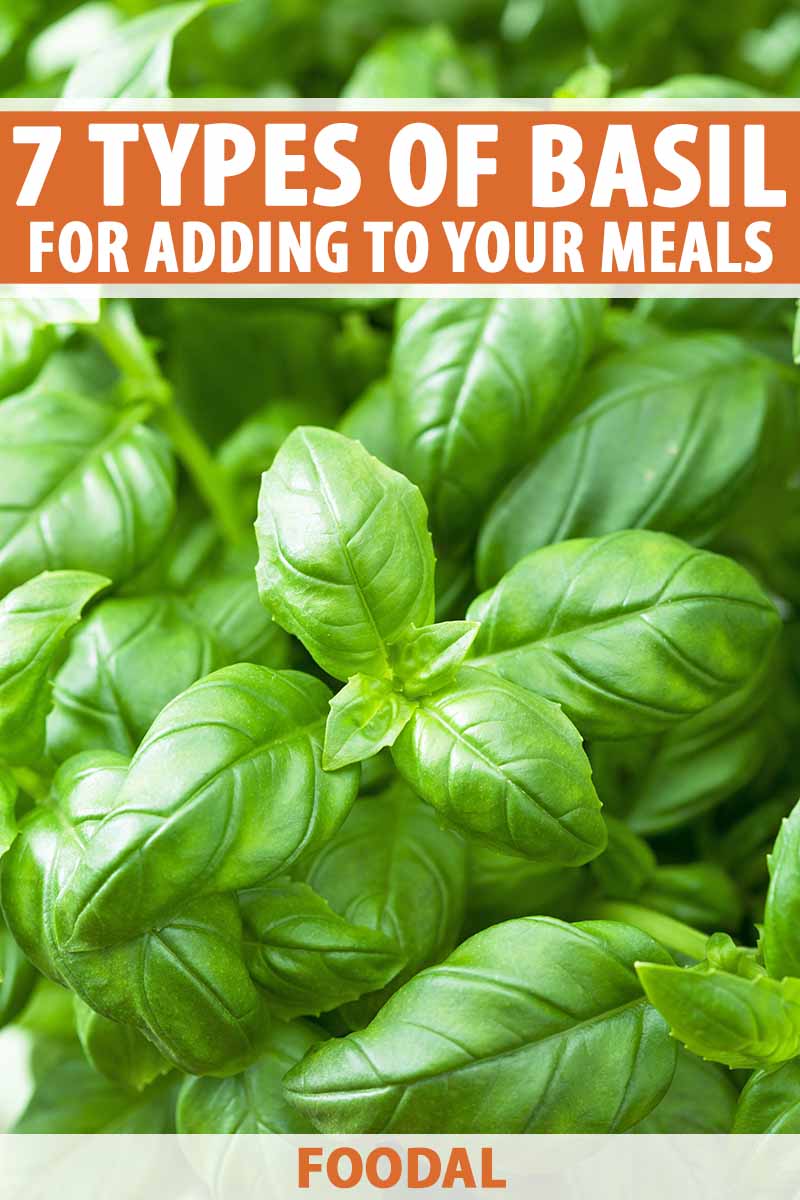

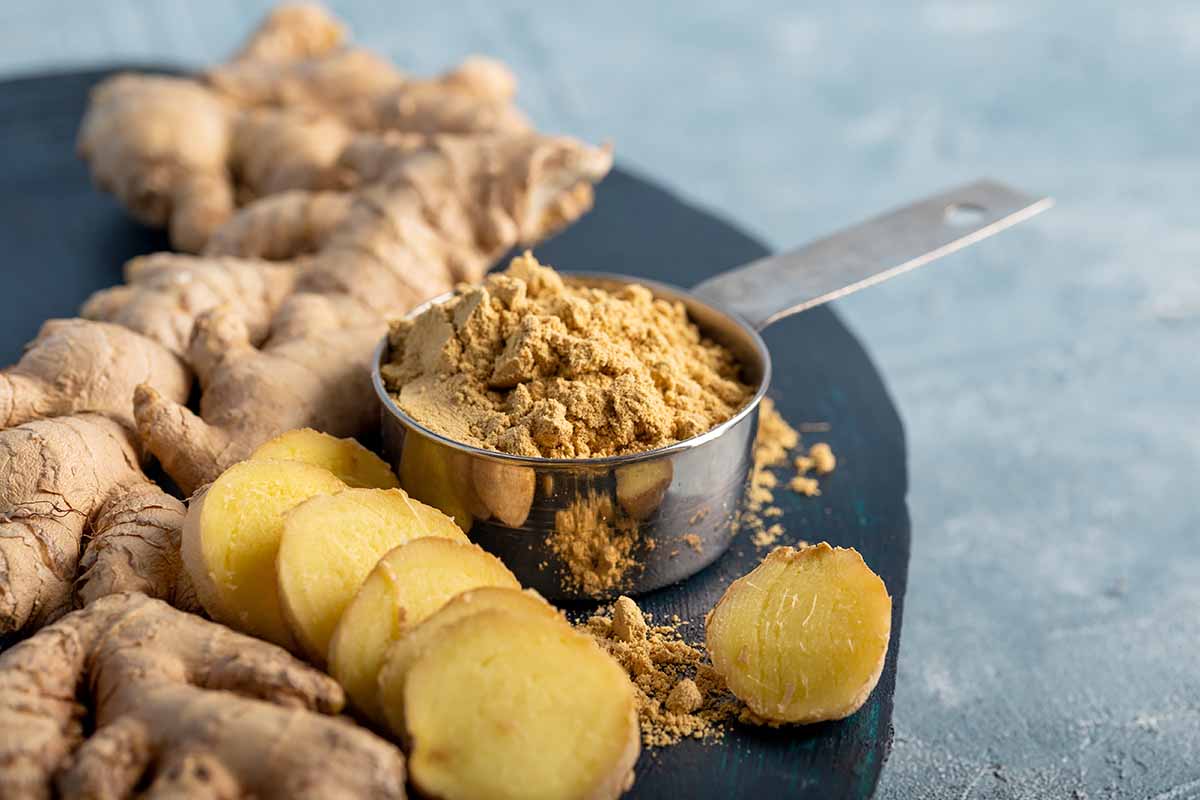
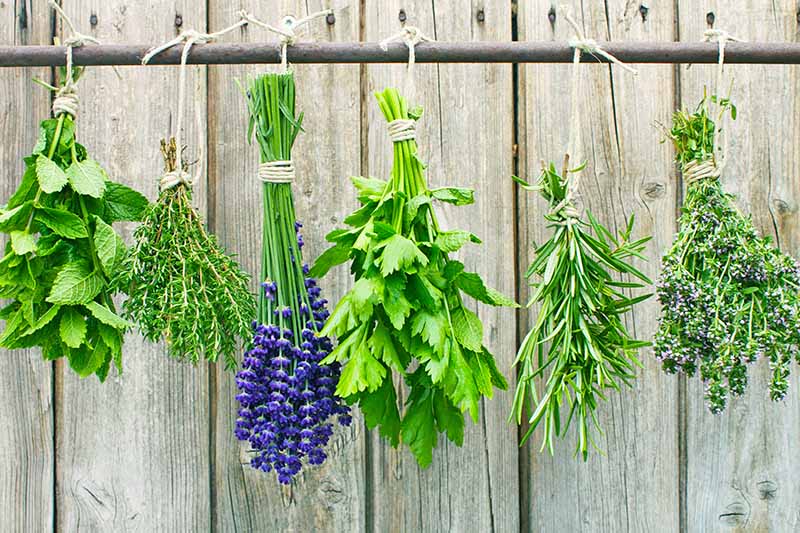
Here in the UK, we only tend to see the large leaf variety of basil so it’s interesting to see that there are plenty of other varieties. It is really easy to grow and there’s nothing better than using your own leaves in a dish.
I never knew there were different types …i know i’m being treated with basil and sage, among other herbs but i don’t know the specific variety being used…i better ask in my next visit. As for cooking with the different varieties, i have yet to venture out in that field but will do so soon 😉
Oh wow! This is great! I didn’t even know there was more than one type of basil plant. I think I’ve always been buying the Italian Large Leaf, which goes great on my home-made pizzas, but the other types, especially the Thai kind looks fun to try! I also definitely want to try the Lemon variety. If I use that, maybe I won’t have to buy lemons! Two birds with one stone!
Jen,
Lemon grass is often hard to find and if I’m preparing a Thai inspired dish that calls for it, I’ll often substitute the lemon grass for the lemon basil. I have it both in a dried form (from last years patio garden) and from one lonely indoor plant that I keep in my small herb collection in the kitchen/dining room window.
I’ve come to the conclusion I really have to start exploring more varieties of fresh herbs. I’m always trying to make the same recipes but differently & I think herbs are key to that. Do you think dried versions of these could be used to the same extent when slow cooking? I’ve noticed, unless I’m making sauces, my herbs don’t last as long as I would like. I’ve done everything from freezing to attempting to let continue to grow in mason jars of water.
Basil is one of my favorite things in the world. I plan to start growing a small indoor herb collection, so I’m glad I stumbled upon this post. I knew of a few different types, like sweet basil, but I wasn’t aware of some of the others. Lemon basil sounds especially intriguing. Maybe once I get the hang of caring for one basil plant, I could experiment with one or two more.
I love basil, it’s like one of my top five spices for sure. But I never knew there was so many! I knew about Thai subtype since that’s what my stepdad uses for pho, but I always thought the sweet and Italian varieties were the same thing. I just thought it was like sweeter like how Italian oregano is sweeter than Mexican oregano. The red one looks super interesting to me though, but I have no idea where I’d get it!
Each year when I’m shopping the green house market, I find myself confronted with a section dedicated entirely to basil. I ponder whether I should purchase different varieties, or stick to what I know to be traditional – Italian and sweet. Last year I did finally decide to purchase two different varieties – lemon and thai. However, being unsure what to do with them (I really didn’t even try to investigate – which is shameful on my part), I grew them but let them die when the season was over.
This article really helps give me some ideas and I think instead of letting some die off outside this year, I will bring them in with the rest of my year round windowsill herbs. Thanks so much for the insight and clearing things up!
I did not realize there were so many type of Basil out there! I love adding fresh basil to my pasta dishes, I love the flavor it gives. I will definitely keep an eye out for the different varieties, as well as look into them to grow in my garden!
Ahhh basil! I absolutely love the flavour and I’ve actually been looking for exactly this information. Been very curious about the varieties world over and their uses. I’ve only ever come across the Italian large leaf and the Thai variety that’s on your list. The other one I do know is this one – https://en.wikipedia.org/wiki/Ocimum_tenuiflorum. I’m not sure if this is on your list under a different name, but we use it a lot here in India. It has high medicinal value. Always wondered if the same strain was used elsewhere for cooking purposes. I’ve read reports of it in Thai cuisine but have never actually seen it used.
You know I never really put all that much effort into spices until we moved a while ago and were living next door to our current neighbors, who grow their own herbs and often give us some. It really makes a huge difference in the taste, and since then I have not gone back. Basil is certainly one of my favorite and most versatile to use, and I love it on eggs in the morning. Thanks for the share.
I use my Thai basil whenever I make pho, or any Asian dish that calls for it. I am Sicilian so, yes, I ALWAYS have sweet basil also, plus hubby added the cinnamon type this year. I keep a container of the fresh herb on my kitchen counter, to smell nice during the summer months! The Thai variety is delish with veggies!!
I’m growing italian large-leaf (unfortunately overshaded by my tomatoes), Thai, purple and another variety called Greek Columnar Basil, which has a strong clove overtones.
I let the flowers go too long on the Thai and purple basils, so I made a pesto with them. Very mild, if you use flowers for pesto.
Curious if you know of/have used the Greek Columnar basil. It grows tall and compact and rarely flowers
Wow, it sounds like you have a really nice mix of cultivars growing this year, Timothy. And I love your idea to use the flowers in a pesto! Now I’m imagining even more edible flowers that could be thrown in… wouldn’t a few garlic chive blossoms make a really nice addition?
One of the Greek cultivars is included in this roundup of favorite basil varieties on our sister site, Gardener’s Path. Please give it a read. This isn’t a type that I’ve grown myself, but it sounds like it’s perfect for containers or small spaces, with a really nice flavor.
A neighbor gave me a basil plant (no idea of variety). I made pesto for the first time in my life using a mortar and pestle. The end product was spicy and we aren’t into spicy. Is there any way to save it?
How lovely! Do you think it was the pungent fresh garlic that gave it the spicy flavor? Water-stressed basil can also sometimes have a flavor that’s more bitter than sweet. Try adding more cheese to your pesto, stirring in some sour cream or yogurt, or adding something acidic like lemon juice to balance out the flavors. You can find more tips for taming heat in this guide.